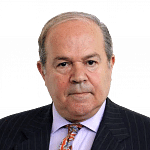LONDON • Defence ministers from Nato today are expected to approve new deployments of troops on the alliance's eastern flank as deterrence against a hostile Russia.
Although the total size of such troop movements is yet to be decided, they represent the biggest expansion in the US-led alliance's military deployments since the end of the Cold War. Nor is there much doubt today's decision heralds the start of a more profound change in Europe's military arrangements, from a posture which assumed the continent's security was not under major threat, to one which identifies Russia as the main challenger.
Russia opposed Nato's 1999 decision to admit Eastern Europe's former communist countries which had been under Soviet control as full members, claiming that the move was both unnecessary and provocative. But Nato rejected these objections, arguing that it was the sovereign right of each nation to belong to any alliance it wishes.
Still, in order to reassure Moscow, Western governments concluded a deal with Russia which promised that, "in the current and foreseeable security environment", the alliance had no plans for "additional permanent stationing of substantial combat forces" in central Europe.
Nato is now arguing that recent Russian behaviour in Ukraine has fundamentally altered Europe's security landscape. For not only did Russia send its own troops to annex Crimea, then part of Ukraine, in 2014, but Russian troops have also shown the capability of mounting a massive surprise attack on bordering Nato states.
Of particular concern are the Baltic states of Estonia, Latvia and Lithuania, which are simply too small to defend themselves against such an attack, and could not hold on long enough for Nato reinforcements to arrive. Unsurprisingly, therefore, the East Europeans demanded the immediate deployment of Nato troops on their soil.
The demand put Nato officials in a quandary. Older member-states such as Germany and Britain argued nothing should be done to worsen the already grave security confrontation with Russia. But everyone also accepted that not deploying troops in new member-states would raise questions about the credibility of Nato's purpose.
The result was a compromise implemented last year, under which small multinational Nato units were rotated in and out of Eastern Europe. The snag is that the arrangement was largely symbolic: A recent study compiled by the Rand Corp, a US think-tank with close links to the Pentagon, concluded that Russia could still overrun the Baltic states in about three days, leaving Nato with either the option of launching a world war to liberate these tiny states, or abandon them and risk the alliance's disintegration.
Avoiding such awful strategic choices is what prompted the US to announce that it will treble to US$3.4 billion (S$4.77 billion) the spending it allocates next year to European military deployments. The US move galvanised Europe: Nato secretary-general Jens Stoltenberg said it will fund "more troops in the eastern part of the alliance, as well as the pre-positioning of equipment, tanks, armoured vehicles".
Still, Mr Stoltenberg will have to tread carefully at today's Nato defence ministers' meeting. Many Western governments are still not prepared to give up hope on improving relations with Russia, so they will insist the new deployments in the east should not be permanent; the compromise Nato is working on is one which describes the troop deployments as "enduring", a term designed to reassure East Europeans that this is more than a one-off gesture, but still hints to the Russians everything is reversible should ties with Moscow improve.
The numbers to be deployed are also not very big: Nato ministers are expected to approve a hike to around 4,000 next year from the current levels of 1,000 troops rotating in Eastern Europe.
Yet of much bigger significance are plans which the ministers will also approve today to start building a network of warehouses for military equipment, as well as improving regional transport infrastructure as part of a broader design to move up to 40,000 troops near Russia's borders in any future crisis. That is, by far, the biggest single military initiative undertaken by the West since the Balkan wars of the 1990s.
Mr Stoltenberg is adamant that his alliance "will not be dragged into an arms race". But that is what could unfold. Mr Alexander Grushko, Russia's Nato ambassador, has already warned that Moscow will respond to the build-up with "its own military-technical answer". Russia, he said, "won't compromise its security interests".


